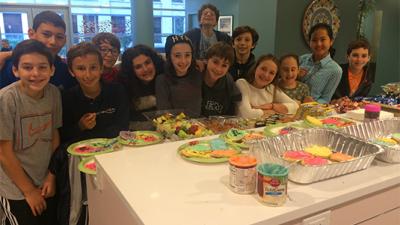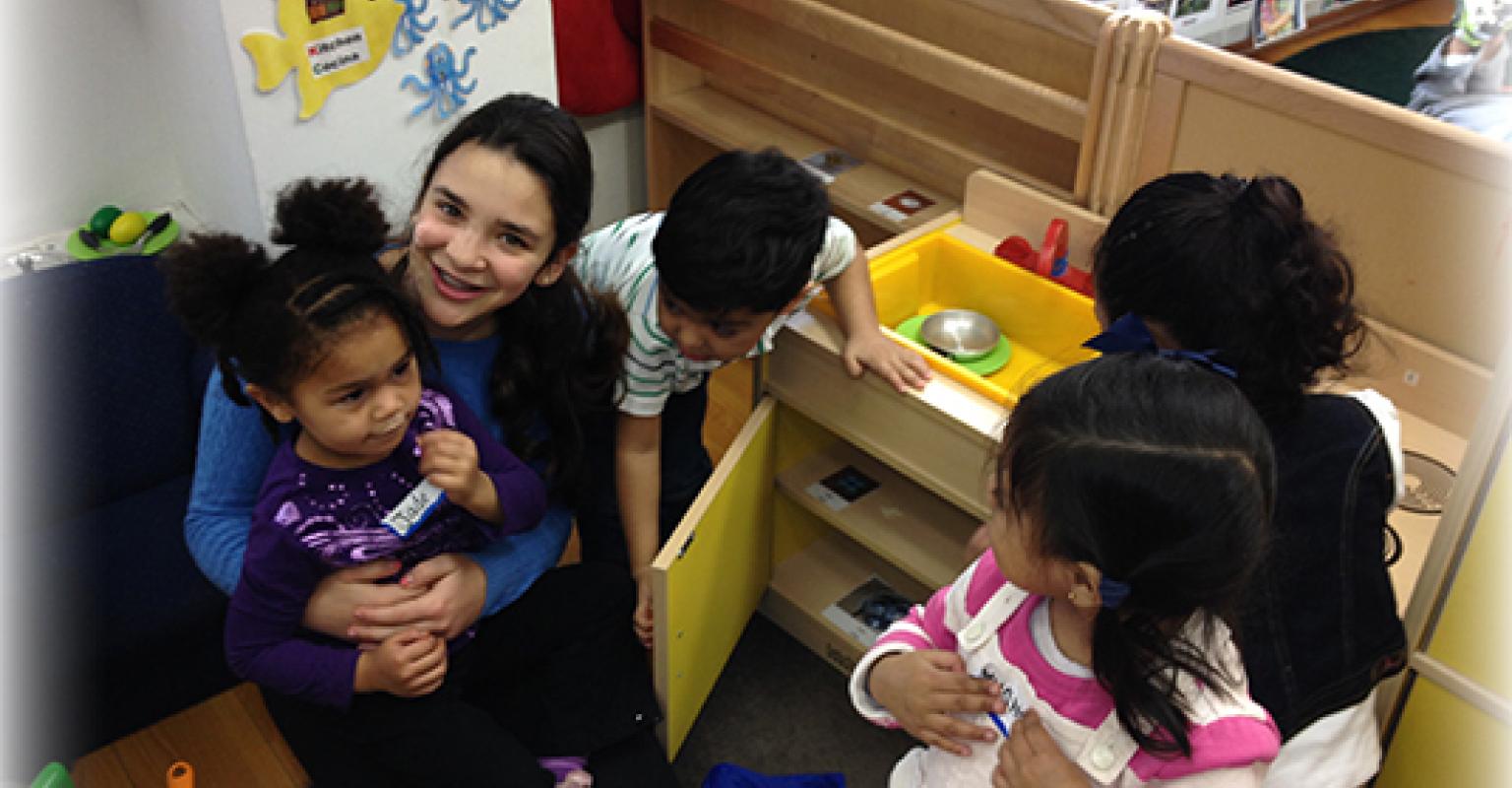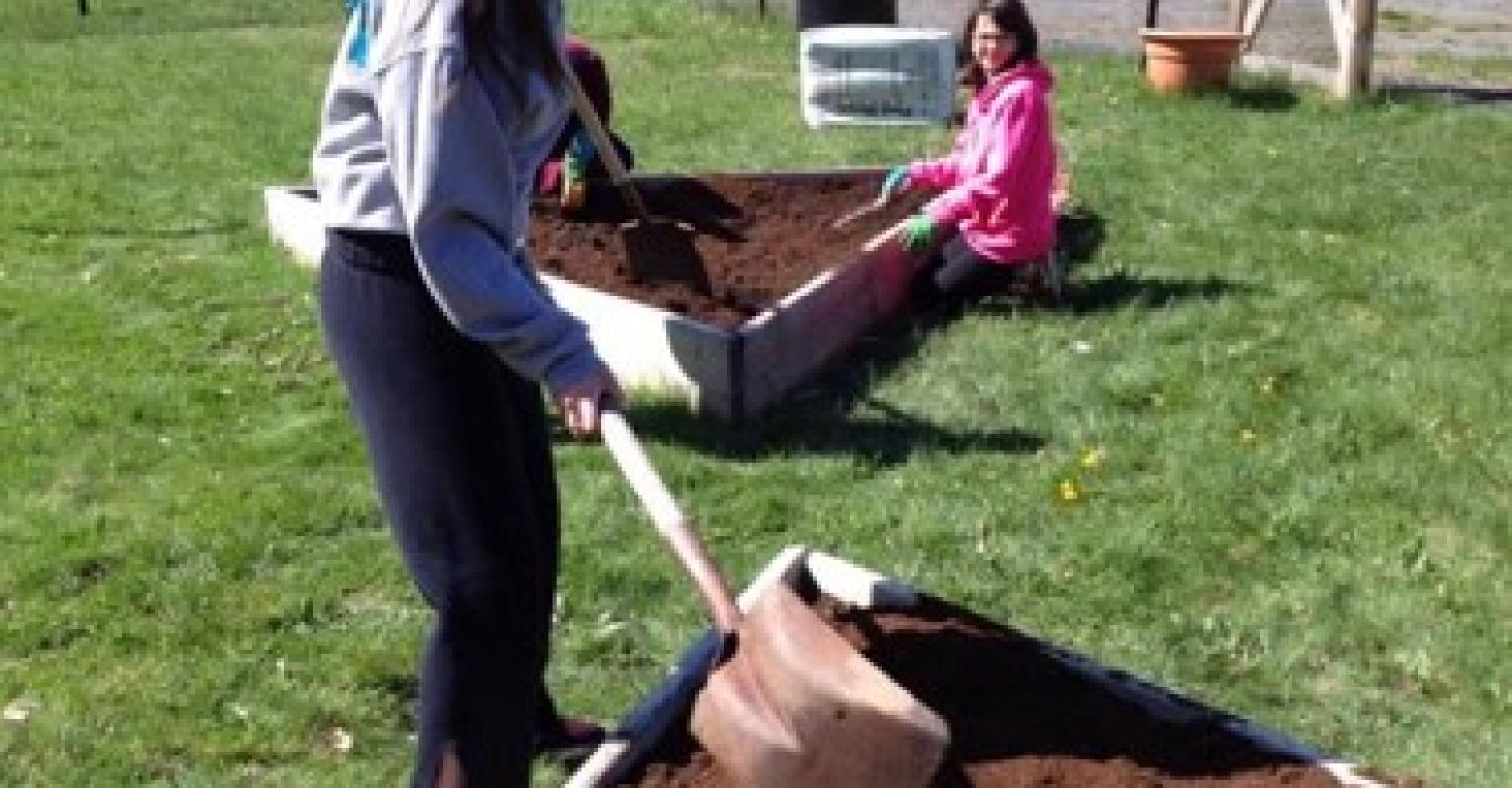Service Learning Model: Mitzvah Corps
Congregation Emanu-El of the city of New York

Model Summary:
Mitzvah Corps is a hands-on learning model for all 7th-grade students at Congregational Emanu-El of the City of New York. The model includes eight units based on ethical mitzvot. Each unit has three sessions: Learning, Action, and Reflection. Students study each mitzvah to determine why it is an important Jewish issue and why it is important in the world in general. During the action session, students go directly to an agency that focuses on the particular mitzvah being studied. Examples include soup kitchens and animal shelters. Key to the learning is reflective time that enables learners to make meaning of their experience.
Who are the Learners?
-
This is a program for 7th graders, they are both pre and post-bar/bat mitzvah students.
- The groups range from 10-25 students.
Who are the Educators/Learning Facilitators?
Two lead educators co-facilitate Mitzvah Corps. They build relationships with the 7th-grade cohort and their families.
When Does the Learning Happen?
-
Mitzvah Corps takes place twice each week: Sunday mornings and Wednesday afternoons. Students choose which day of the week they will be attending.
- Action sessions happen outside of school hours and are also offered twice so students can choose when to attend.
Where Does the Learning Happen?
-
Learning and reflection sessions happen in the classroom on Sunday or Wednesday.
- Action sessions are held on-site at each agency visited.
What is the Learning? How is it Designed?
-
Students are empowered to respond to important societal issues.
-
Units that have been studied include Homelessness, hunger, special needs, poverty, animals, the elderly, visiting the sick, caring for the dead.
-
Students study Jewish texts which explain how and why we respond to each issue as Jews and as citizens of the world.
-
An important part of the learning takes place when students interact directly with people during the action sessions.
-
There is considerable focus on relationships as learners work together in their action sessions.
- The rationale for the curriculum is that as Mitzvah Corps participants become Jewish adults they should be aware of the issues which surround them and how they can and should respond to these issues.
What Were You Trying to Achieve with this Model?
Congregation Emanu-El was seeking a model that would be equally robust both before and after the students became b’nai mitzvah. They wanted to create a model that was relevant and that had the flexibility and resonated with the community. It began as an alternative to the regular 7th-grade model and today because of such a positive response, it is the only 7th-grade model.
Key First Steps and Recruitment Plan:
-
The model has become part of the institutional culture.
-
It is advertised in the school brochure, in the temple bulletin, and on the temple website.
-
The staff reaches out to all eligible students personally.
-
6th graders and their families are invited to participate in the final action session of the year.
-
There is a 7th and 8th grade Service-Learning Reception at the end of the year to which all students and families are invited.
Role of governance and Clergy:
Clergy are aware of Mitzvah Corps and strongly support its rationale. The clergy are not involved in the day-to-day running of the program, although clergy could be. They are at the final end of the year reception and acknowledge each student’s participation in the program.
Budget:
$15,000 covers two staff salaries, supplies, and transportation for each “action” session.
Hiring Needs:
-
A senior educator is needed to create and implement the curriculum and to determine how students will get from school to the various agencies they will be visiting.
-
Once the curriculum has been developed (although it does continuously evolve), Mitzvah Corps can be run by a “trained” graduate student who is familiar with the values and the texts being taught and who knows about the agencies being visited.
- There are generally two staff people for Mitzvah Corps.
Relationship of Model to Congregational Learning System:
This is a replacement for the traditional model for the 7th grade.
How Do You Describe Your Congregation?
-
Reform Congregation, member of the Union for Reform Judaism, 2500 member families, 4 full-time clergy, 2 rabbis emeriti, 2 interns, 5 full-time educators, 4 part-time educational staff, 17 faculty, 2 assistant teachers with a school of 239 students.
- Educational Vision: “Find a teacher, make a friend, and treat everyone with respect!” [Pirkei Avot 1:6] In our school we are partners in the endeavor to be lifelong students of Jewish history, ritual, and text, to encounter holiness, and to be passionate advocates for social justice and “tikkun olam (repairing the world).”
Supplementary Materials Include:
- Models-In-Action
- Social Justice
- Tzedakah
- After School and Beyond
- Congregational Learning
- Teen Engagement
- Educator Training
Discover more

In Service Learning Models the obligation to engage in tikkun olam, repairing the world, serves as the focal point for learning.

Congregation Emanu-El of NYC. 8th graders explore different ways of doing social justice including fundraising and philanthropy, community organizing and advocacy as well as the Jewish context for these approaches. They volunteer throughout the year.

Congregation Kol Ami White Plains, NY. Mesorah (tradition) is a choice-based model for 7th-12th graders that includes CORE learning and hands-on, experiential, project-based learning electives.
